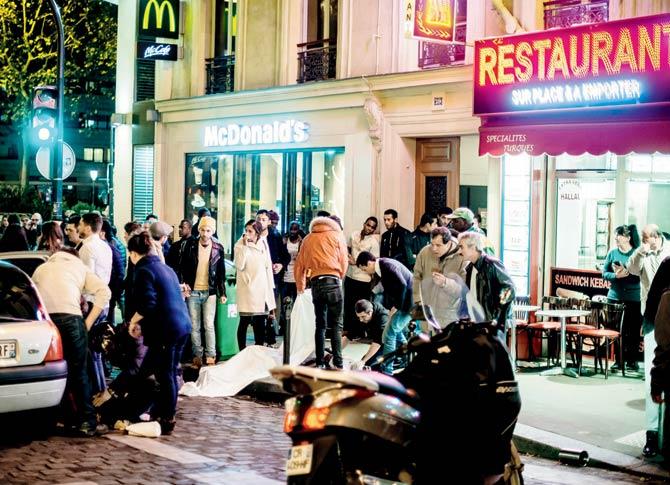The UN member-states concluded that the “active shooter scenario” was used to maximise confusion, casualties

United Nations: Islamic State terrorists had “studied” the 26/11 Mumbai terror attack and similar “active shooter scenarios” to maximise confusion and casualties before hitting multiple locations — sports stadium, restaurants and a concert hall — in Paris on November 13, 2015, UN member-states have said.
ADVERTISEMENT

Scenes from Cafe Bonne Biere in Paris following a series of coordinated attacks in and around the city in November 2015
The 18th report of the Analytical Support and Sanctions Monitoring Team submitted to the UN Security Council said the modus operandi that IS operatives demonstrated while conducting multiple, nearly simultaneous attacks, such as in Paris and Brussels, presents problems in terms of security response.
“Member-states explained that that was a deliberate tactic to make it difficult to mount coordinated responses to the most dangerous continuing threats,” the report said.
At least 130 people were killed in the Paris attacks and hundreds wounded, while the Mumbai attacks, carried out by the Pakistan-based Lashkar-e-Toiba killed more than 160 people. According to various member-states, given that during attacks such as that on the Bataclan Theatre in Paris, the perpetrators’ apparent aim was to cause fatalities as swiftly as possible, it is essential for security forces to take action quickly, the report said.
“Traditionally, security forces seek to buy time to negotiate. Consequently, those in command and those providing policy approval should be briefed in advance on the limited options available to engage the terrorists and halt the killings as soon as possible,” it said.
The report also said several leaders of the Al-Qaeda, including some of Indian-origin, are not listed under the UN as designated terrorists.
 Subscribe today by clicking the link and stay updated with the latest news!" Click here!
Subscribe today by clicking the link and stay updated with the latest news!" Click here!






